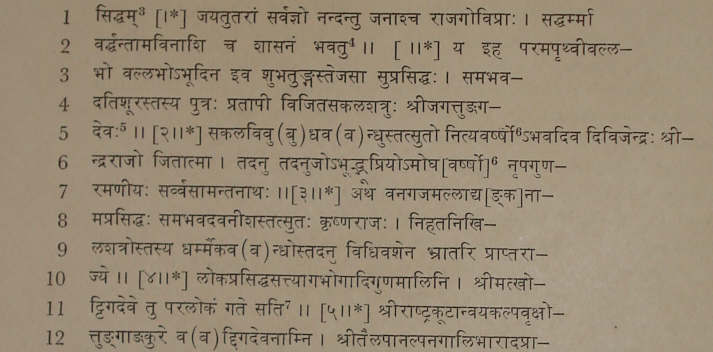|
The Indian Analyst
|
North Indian Inscriptions |
INSCRIPTIONS OF THE SILAHARAS OF SOUTH KONKAN
well as certain maṭhas (evidently in Balipattana). The record was written by the poet Dēvapāla,[1] son of Vāmana, who was then Nāgara-sāndhivigrahika, and it was engraved by Vajjaḍa. ..As for the localities mentioned in the present inscription, Balipattana, (or Balinagara) the capital of King Avasara, is probably modern Khārepāṭaṇ. Chandramaṇḍala was the territory round modern Chāndōr in the Goā State. As for Kiñjala, there are three places named Kinjaḷē in the Ratnāgiri District—two in the Khēḍ tālukā, and one in the Saṅgamēśvara tālukā, but in the absence of further details such as the boundaries etc. of Kiñjala, it cannot be determined if any of them is identical with it. No name like Pulīsa can now be traced in the Ratnāgiri District.
TEXT[2]
Second Plate : First Side
[1] This Dēvapāla’s son Lōkapārya wrote the two later grants of Raṭṭarāja (below, Nos. 41 and 42).
|
|||||||||||||||||||||||||||||||||||||||||||||||||||||||||||||||||||||||||||||||||||||||||||||||||||||||||||||||||||||
| > |
|
>
|









